(16957 products available)













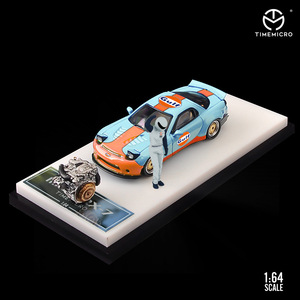
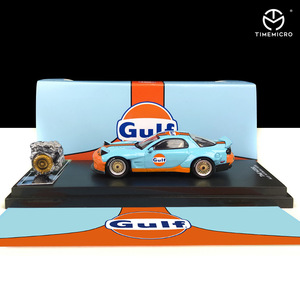
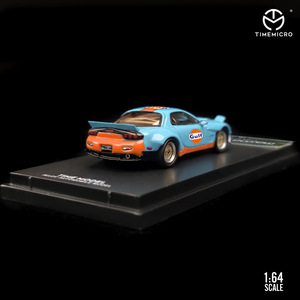
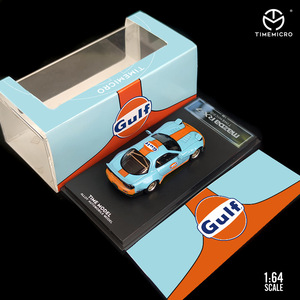
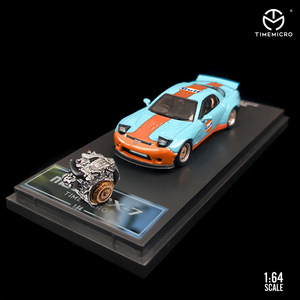

















































































































































































Die cast models cars are fabricated using an alloy of zinc and aluminum. The toys are known for their sturdiness and intricacy. Various types of die-cast model toys are available, including;
Classic cars
Classic cars are one of the most sought-after types of die-cast models. These toys reproduce vehicles from the past with great care. They often feature detailed interiors, authentic paint jobs, and period-specific wheels and tires. Collectors appreciate them for their nostalgia and craftsmanship.
Race cars
Die-cast race car models are replicas of famous vehicles from their tracks. These toys are popular among motorsport fans and collectors. They often come with sponsor decals, performance parts, and aerodynamic features. Some manufacturers offer limited editions of notable races and podium finishes. This makes them even more valuable.
Luxury cars
Luxury die-cast car models bring high-end automobiles within reach. These toys are affordable replicas of expensive cars like Ferraris, Lamborghinis, and Bugattis. They offer a chance to own a piece of automotive opulence without breaking the bank. Collectors can appreciate the attention to detail and quality craftsmanship that goes into these replicas.
Muscle cars
Muscle die-cast model cars are replicas of American-made muscle cars from the 1960s and 1970s. These toys are popular among car enthusiasts for their raw power and aggressive styling. They often feature big engines, hood scoops, and bold graphics. This makes them a favorite among collectors who love performance cars.
Custom cars
Die-cast custom cars are one-of-a-kind replicas. They are made by modifying existing die-cast models. This gives rise to unique creations that reflect the owner's personal style. These toys can feature custom paint jobs, unique wheels and tires, and personalized interiors. They are popular among car enthusiasts who love to stand out from the crowd.
Choosing the right diecast cars is not just about picking a favorite model; it involves several factors that ensure one gets the best value, quality, and satisfaction. Understanding the key aspects of selecting a diecast car can enhance the collecting experience and make it more enjoyable. One of the primary considerations when choosing a diecast car is the level of detail and accuracy in its craftsmanship. Collectors should look for models that closely replicate the real-life counterpart in terms of paintwork, interior features, and functional parts like doors, hoods, and trunks. The level of detail is often indicated by the scale of the model, with larger scales allowing for more intricate work.
Another critical factor is the reputation of the manufacturer. Renowned makers like Hot Wheels, Matchbox, and Tomica are known for their quality and precision in creating diecast cars. These manufacturers have established a track record of producing reliable and durable models that collectors can trust. Additionally, reading reviews and seeking recommendations from fellow collectors can help find reputable brands and manufacturers. The material used to make the diecast car is also essential in determining its quality and longevity. While all diecasts are made from metal, some are more durable than others. Therefore, one should choose models made with high-grade zinc alloy or aluminum that can withstand handling and potential display hazards.
Price is another aspect to consider when purchasing a diecast car. While it may be tempting to go for the cheapest option, it is vital to balance cost and quality. Some lower-priced models may lack detail or be poorly constructed, leading to disappointment in the long run. Instead, look for reasonably priced cars that offer good value for money without compromising on quality. As a collector, one should be aware of the model's scale and size. Diecast cars come in various scales, ranging from 1:18 to 1:64, showing how much smaller the model is compared to the actual car. Larger scales offer more detail but require more display space, while smaller ones are more practical for limited areas.
Although the primary purpose of these miniatures is to serve as collectibles, they can be utilized in various ways. Below are some of the functions, features, and designs of die-cast models of cars.
Collectibles
Many people collect die-cast model cars as a hobby. Some collect them to keep in pristine condition, while others buy to display them. Several factors influence the type of models a collector gets, including personal preference, brand, and rarity. Some car enthusiasts collect models of cars they own or wish to own one day.
Display
Die-cast cars are excellent for displays. Many collectors display their models in custom-built cabinets. Some even go as far as installing lights in their cabinets to showcase their collection better. Limited edition or rare models are highly sought after by collectors, increasing their value over time.
Gifts
Die-cast car models make great gifts for any occasion. One can gift a single model or an entire set. They are suitable gifts for children, adults, and even the elderly. Special occasion models, such as Christmas or birthday editions, are available.
Authentic detailing
Die-cast car manufacturers ensure their models have accurate details. This authenticity is because the models are made from metal, which allows for precision engineering. The windows, doors, and even the engine compartments are correctly shaped. Some manufacturers even add fine details like working headlights, taillights, and wipers.
Interactivity
Some die-cast models are built to be interactive. They have features like remote controls to move the cars forward and backward. Other models have working parts like doors, hoods, and trunks, which can be opened and closed. Some even have sound effects like revving engines and honking.
Rarity and exclusivity
Several factors contribute to a model's rarity. Limited production runs, special editions, and models from defunct manufacturers increase a car's rarity. Exclusive models released through partnerships or sponsorships are highly sought after. One example is models released through movies or major events like the Olympics.
Die-cast models are designed using a multi-step process. First, a prototype is created using sketches, 3D models, or existing vehicles. The prototype is then used to create a mold, which is made from zinc, aluminum, or magnesium. The mold is then poured with molten metal to create the die-cast parts. After that, the car parts are assembled to make the final model. This includes adding plastic and rubber components, followed by the packaging process. The entire process is done with precision to ensure accuracy.
While playing with diecast car models is fun, one should ensure the toys are safe. Check if the models have safety features like rounded edges and no small parts for younger kids. It is also essential to look at the quality of the toys.
Rounded edges
Most diecast toys have rounded edges. This is because sharp corners can hurt kids when playing. Rounded edges ensure kids can play with the models without getting any cuts or bruises.
No small parts
Some diecast car models have small parts like mirrors or signs. However, models with small parts are not ideal for younger kids. This is because they can easily swallow the pieces by mistake. It is important to check the age recommendation of the manufacturer. This is because they design the models with safety features suitable for the specific age group.
Strong glass
Most diecast models have glass made from strong materials like acrylic. This is because the glass can easily break when handling or playing. Sharp pieces from the glass can injure a kid. Therefore, it is important to ensure the glass is strong so that it does not break easily.
Quality
Diecast models are made from metal, which is strong and durable. This means the models can last for many years. The paintwork on the models is also detailed and high quality. This ensures the paint does not chip or fade easily. Some diecast models have quality rubber wheels. This allows the model to roll smoothly on any surface. Additionally, they can have quality features like opening doors, detailed interiors, and working lights. The detailed quality features make it an enjoyable experience when playing.
Certifications
It is vital to ensure the diecast models have all the needed certifications. This shows the toys have passed all the necessary safety and quality tests. Some common certifications one should look for are:
What is the main difference between die-cast models and plastic models?
The former is made from metal alloys, while the latter is made from plastic.
Do die-cast car models have parts that move?
Some different models may have movable parts, such as doors, hoods, trunks, wheels, and steering wheels. However, not all die-cast models have movable parts.
What is the primary use of die-cast models?
Die-cast toy cars are mainly used for collection by people of different ages. Some models are also used for showcasing and promotional activities. Moreover, some toys are developed for children to play and have fun.
Are die-cast models safe for children?
Die-cast models are developed with safety standards in mind. However, buyers should ensure they get models suitable for the specific age range of the child. Such models should not have small parts that can be detached and swallowed.